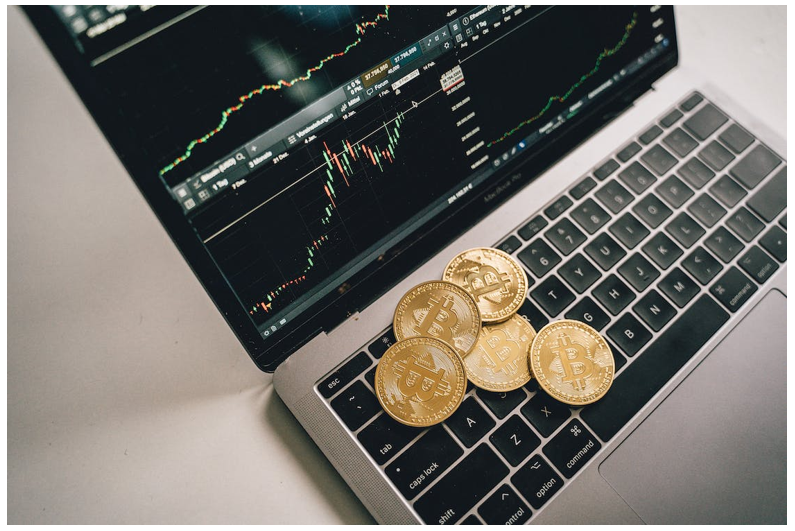In the fast-paced and ever-changing world of finance, investors are constantly looking for ways to diversify their trading portfolios and mitigate risks.
Traditional investments like stocks and bonds have long been the cornerstone of many investment portfolios. However, as markets become more volatile and interconnected, many investors are looking to alternative investments to help diversify their holdings and potentially generate higher returns.
This article delves deeper into the world of alternative investments, discussing their potential benefits and risks, and providing insights on how to incorporate them into a well-balanced trading portfolio.
If you are not sure whether you’re ready to invest in these markets, consider trying the best forex brokers for TradingView com to trade foreign exchange.
Understanding Alternative Investments
Alternative investments refer to any financial assets that do not fall under the traditional categories of stocks, bonds, or cash.

P.C: PEXELS
These investments can range from tangible assets like precious metals, artwork, and wine collections to more complex financial instruments like private equity, hedge funds, and derivatives.
The main goal of incorporating alternative investments into a trading portfolio is to provide diversification and reduce overall risk.
This is because alternative investments often exhibit low correlations with traditional asset classes, meaning they tend to perform differently under various market conditions.
1. Real Estate
Real estate investments offer an attractive option for diversifying your trading portfolio. They can provide a steady income stream through rental properties or capital appreciation through property value increases.
Moreover, real estate investments tend to be less volatile than stocks and bonds, making them a suitable choice for risk-averse investors.
There are several ways to invest in real estate, including:
- Direct Ownership: Purchasing a property outright and managing it yourself or through a property manager. This approach allows you to have direct control over your investment but requires time and effort to manage the property.
- Real estate investment trusts (REITs): Publicly traded companies that own and manage income-producing properties. Investors can buy shares of REITs, which pay dividends from rental income. This offers the advantage of liquidity and diversification without the need for direct property management.
- Real estate crowdfunding: Online platforms that allow investors to pool their money and invest in specific real estate projects. This method enables smaller investments in a variety of properties, spreading risk and potentially increasing returns.
Real estate investments also come with their own set of risks. These include property market fluctuations, tenant issues, and the illiquid nature of physical properties, which can make it challenging to sell.
To mitigate these risks, investors should conduct thorough due diligence on potential properties, diversify across different types of real estate, and maintain a long-term investment horizon.
2. Commodities
Commodities are raw materials or primary agricultural products that can be bought and sold on exchanges. Examples include precious metals (gold, silver, platinum), energy resources (oil, natural gas), and agricultural products (corn, soybeans, wheat).
Investing in commodities can help protect your trading portfolio against inflation and currency fluctuations, as their prices often rise when traditional financial assets decline.
P.C: PEXELS
Here are some of the ways you can invest in commodities:
- Futures contracts: Agreements to buy or sell a specific commodity at a predetermined price and date in the future. This allows investors to speculate on price movements without having to take physical possession of the commodity.
- Commodity ETFs: Exchange-traded funds that track the performance of a basket of commodities or a specific commodity index. These offer an easy and liquid way to gain exposure to commodities without directly trading futures contracts or owning physical assets.
- Physical ownership: Purchasing and storing the actual commodity, such as gold bars or silver coins. This approach can provide a tangible store of value but requires storage, insurance, and potentially higher transaction costs.
However, commodities can be highly volatile and influenced by various factors like geopolitical events, weather conditions, and supply-demand imbalances.
A prudent approach to commodity investing may involve diversifying across different types of commodities and using a combination of direct ownership, futures contracts, and ETFs to spread risk and optimize returns.
3. Cryptocurrencies
Cryptocurrencies have emerged as a popular alternative investment option in recent years, led by the meteoric rise of Bitcoin. These digital currencies use cryptography and blockchain technology to enable secure transactions and decentralized control.
The main ways of investing in cryptocurrencies are the following:
- Buying and holding: Purchasing cryptocurrencies directly through an exchange and storing them in a digital wallet. This strategy is suitable for long-term investors who believe in the future growth and adoption of digital currencies.
- Cryptocurrency Funds: Investment funds that hold a diversified portfolio of cryptocurrencies. This approach offers exposure to a broader range of digital assets, reducing the risks associated with investing in individual coins.
- Cryptocurrency Mining: Using specialized computer hardware to validate and process cryptocurrency transactions, earning new coins as a reward. This method requires significant upfront investment in equipment and ongoing energy costs but can generate income for those with the technical expertise to set up and maintain mining operations.
Cryptocurrencies are highly volatile and can experience significant price swings in short periods.
Moreover, the regulatory environment surrounding digital currencies remains uncertain, with potential changes in legislation posing risks to investors. It is crucial to conduct thorough research and consider your risk tolerance before investing in this asset class.
Quick Links:
- How Much Can You Make Selling On Amazon?
- How To Handle Closed AliExpress Orders- Thorough Guide
- How to Drive External Traffic to Your Amazon Listing?
Final Thoughts
In conclusion, alternative investments can offer an effective way to diversify your trading portfolio, potentially generating higher returns while reducing overall risk.
However, it is essential to conduct thorough research and carefully assess the risks associated with each option before diving in. With a thoughtful approach to portfolio construction, investors can harness the power of alternative investments to achieve their financial goals.

